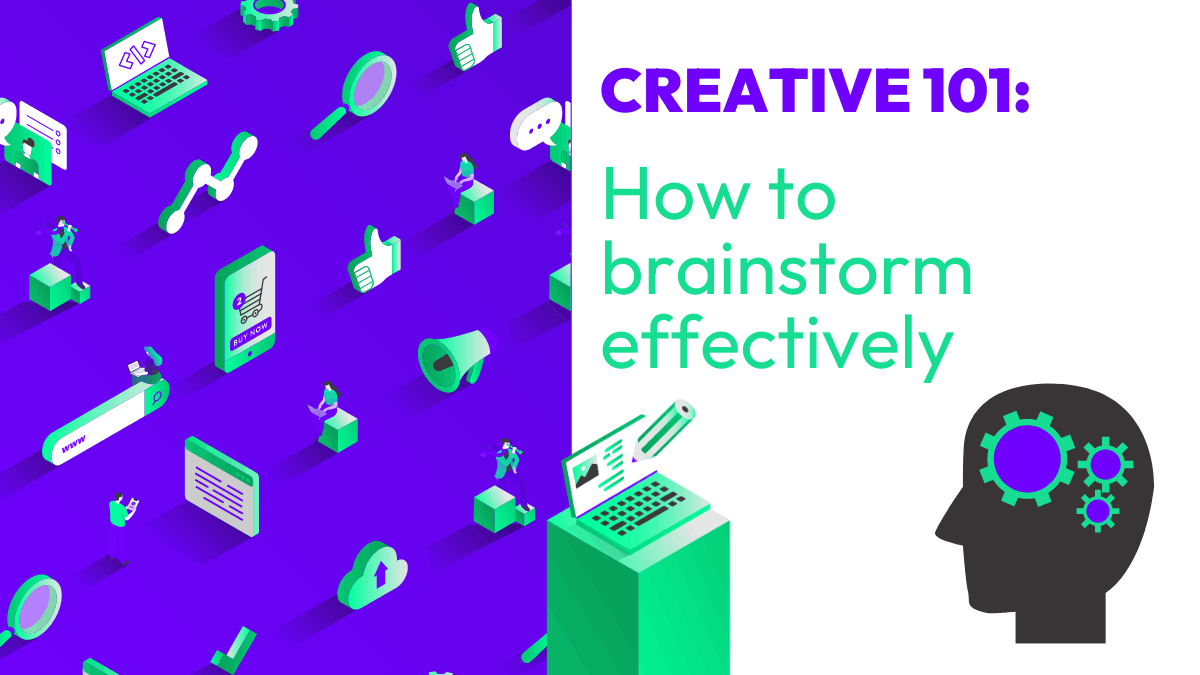
How To Brainstorm Effectively & Develop Ideas
Inspiration can strike at any moment, but having a groundbreaking idea when you actually require one as soon as possible can often seem like an impossible task.
Surely there’s a better way to have an influx of creative and innovative ideas at the time we need it most? For most, a brainstorming session is a solution to this problem, gathering people together and asking them to put their best ideas on the table. But knowing how to brainstorm can be an even bigger obstacle to creativity.
Whether you’re using brainstorming as a way to determine a new strategy, or you’re brainstorming creative ideas as a problem-solving method, brainstorming activity needs to strike a balance.
Being able to brainstorm effectively means having enough space to get your creative juices flowing, along with a structure that helps shared ideas to be developed and thoroughly examined.
A Fool-Proof Brainstorming Process
We’ve decided to share Tecmark’s secrets to a successful brainstorming session with our team’s go-to method. It’s a simple two-step process which seems straightforward on the surface, but it is an invaluable addition to any creative work.
The best part about Tecmark’s brainstorming process is that it can be implemented in a group, or as an individual, so no matter what you’re brainstorming for, you’ll be able to give it a try!
Step 1: Prepare
Regardless of the industry that you work in, preparation is key and can help you to avoid future obstacles and issues. This is exactly the same for brainstorming.
Effective brainstorming requires a clear understanding across your team of the brand or business you’re working on. Outlining the do’s and don’ts, the short-term and long-term strategic goals and any previous work that has been done is absolutely essential at this stage.
This is usually where any onboarding documents or original notes come in handy, however, be careful! Too much preparation can be restrictive, so make sure that any preparation in the form of documents is actually necessary to the brainstorming session so as to not drown out people’s ideas.
Outside of documents, prepare a comfortable space and environment that is conducive to creative work too. Check in with the people participating in the brainstorming session and find out what they prefer. Perhaps they’d like some dimmer lighting or a totally silent meeting room – everyone is different so try to accommodate to their needs.
And of course, make sure that the people you invite to your brainstorming session are actually necessary. Too many cooks spoil the broth, but if the remaining team members aren’t suitable for creative work or the specific project you’re working on, you won’t get the results you want!
Once everyone is gathered, appoint a person to take notes of each idea. It’s easy to get carried away once the ideas start flowing, so having a designated person ready to note down the details makes reflecting back and deciding on a final idea a much easier task.
Step 2: Question
The next step is the main body of the work, with questions and answers guiding brainstorming members to their ideas.
It’s almost impossible to pluck a fantastic idea out of thin air that’s ready to action straight away, but this step ensures that most ideas that are put forward are suitable. The types of questions will obviously vary from project to project, but they should always help to define the problem that you want to solve.
The questions should also outline any criteria or specific requirements that have to be met, along with any obstacles that could be faced. Don’t expect any ideas or solutions to these questions to be found during this part of your brainstorming session.
Step 3: Answer
From here, your answers to these questions will kick off your creative ideas and your brainstorming session can really come into its own. Finding the answers is less straightforward, and can take a number of different forms. We recommend three top strategies for boosting your brainstorming sessions:
Stop-and-Go Brainstorming
Stop and go brainstorming is a problem-solving technique that’s best for group brainstorming sessions. The idea is there is a ten-minute section in which the group shares ideas only with no conversation following each idea. Then, another ten-minute section starts in which an evaluation of the mentioned ideas can begin.
This type of alternating time sectioning stops the conversation from going off track and can also lead to more ‘crazy’ ideas coming to the forefront thanks to the lack of immediate reflection. We recommend using this strategy to begin a brainstorming session, as it can help the quieter members of the group to speak up, before going into further detail later on.
Word Associations
Great for individual brainstorming sessions, word associations involves choosing a random noun that’s not connected to the topic of your brainstorming session. Then, add it to your session and use it to develop ideas.
This tactic sounds a little bit vague, but it is perfect for working on your own, as you allow your mind to wander whilst thinking about the random object. It helps to avoid falling into the trap of the same words or thoughts circling your mind and encourages more free-flowing thinking.
Rapid ideation
Rapid ideation is exactly what it says on the tin! Set a timer and write down as many ideas as possible and don’t allow any time to discuss the ideas in this time.
This sense of urgency can help people to skip the inner doubt and just write down the first ideas that come to mind. As a tactic, the focus is on the quantity, rather than the quality of ideas put forward. If you really want to push your brainstorming participants, try setting a minimum number of ideas (or a competition for the most ideas written down.)
Once the time limit has been reached, it’s time to discuss and develop the ideas into a more actionable one.
Tecmark Top Tip:
Don’t let a conversation go on for too long and allow people creative freedom. Generating a lot of ideas before discussing them further is key to having a successful brainstorming session. Conversations running off course or team members feeling unfocused can kill a creative vibe, so make sure you take breaks, set boundaries and get excited!
Get in touch with Tecmark today!
Like what we had to say and want to learn more? Our expert team has plenty of creative tips for content marketing and digital PR for you to check out in our brand new e-guide!
Our team also has expert insight and advice about all things SEO, from technical SEO to website migrations, we can clue you in and boost your business with our fine-tuned processes. Get in touch with us for a chat about how we can help, today!


